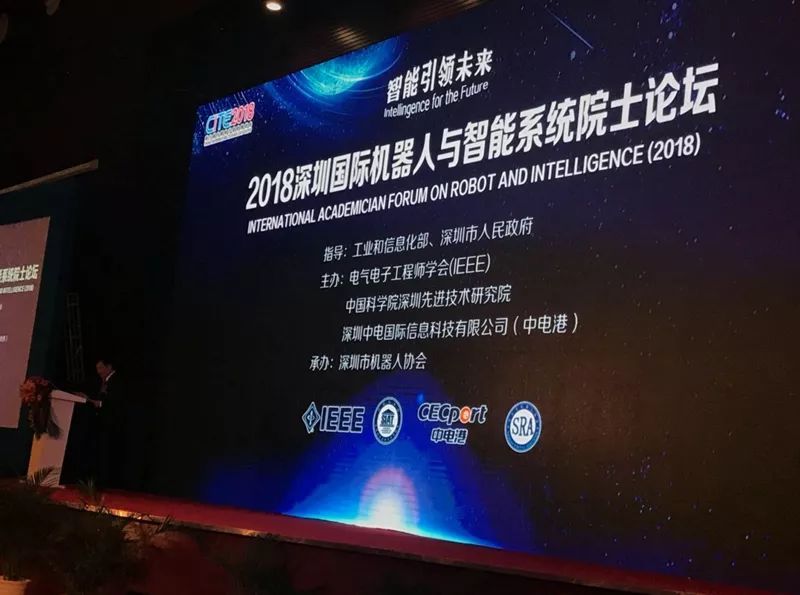At the 2018 Shenzhen International Symposium on Robotics and Intelligent Systems held on April 9, the reporter learned from Bi Yalei, secretary-general of Shenzhen Robotics Association, that in 2017 the output value of the Shenzhen robotics industry exceeded 100 billion yuan for the first time, reaching 103.5 billion yuan, officially becoming Shenzhen. The city's strategic emerging industries.

At the forum, Biaret issued a 2017 white paper on the development of the robotics industry in Shenzhen. He stated before the publication of the white paper that there is a threshold for strategic emerging industries in Shenzhen. The industry with a value of several billion will be the future industry and more than one hundred billion yuan will be considered strategic. Emerging industries, and yesterday’s white paper announcements were launched around this topic.
The white paper shows that in 2017, the number of robotics companies in Shenzhen increased from 469 in 2016 to 594; in 2017, the output value reached 103.5 billion yuan, and the industrial added value reached 36.2 billion yuan. From the perspective of the development and layout of the districts, Bao’an District’s robotic industry has developed rapidly and has grown at the top of the list. The robotics industry in Longhua District, Longgang District, and Guangming New District has expanded its distribution, and its proportion has increased significantly.

Among them, the output value of industrial robots in Shenzhen was approximately 75.556 billion yuan, and the industrial added value was 27.512 billion yuan; industrial robot companies mainly gathered in Bao'an District, and Longhua District recorded the fastest growth rate; in terms of output value, the proportion in Nanshan District was still relatively high.

The output value of the service robot industry was approximately 27.944 billion yuan, and the industrial added value was 8.868 billion yuan. From the perspective of regional distribution, Nanshan District has a relatively high proportion of both the number of enterprises and the industrial output value, and the number of enterprises has reached 36.84% of the total number of service robot companies in the city.

According to the white paper, compared to the previous two years, the majority of small and medium-sized enterprises have taken the lead. Last year, the robotics industry had already emerged as a leading company. The industrial robotics industry has already begun its scale-up effect, and service robots have entered a period of rapid development. Specifically, in the field of core components, key robot components companies, such as controllers and servo drives, have emerged to make up for industry gaps. Among them, controllers and servo motors have been developing rapidly. However, it takes time for the decelerator to become large-scale. The emergence of excellent enterprises such as Raytheon Intelligence and Geotech. "Ontology + System Integration" forms the current "optimum solution" and is used in leading industries such as 3C and logistics. Representative companies include Pennefax and Teda Robotics. Service robots have emerged in a number of subdivided areas, such as AGV (Automatic Guided Transport Vehicles), drones, home robots, etc., and are represented by Ubisoft, Yongyida.
At the Academicians Forum, Dr. Qu Dao-kui, the head of the Xinsong Robots, revealed the story behind the “8-minutes of Beijing†of the Pyeongchang Winter Olympics. “It became icing on the cake, and it was lost,†and the reporter also felt the music. The pressure on Dr.
Qu Dao-kui said, “At the closing ceremony of the Pyeongchang Winter Olympics, we interacted with 24 actor and 24 actor, combined sound and optoelectronics, and added 16 sets of dance movements, which combined multiple sensing technologies. There is also artificial intelligence in the overall control and coordination, so this time the robot achieved a breakthrough in the international arena with people competing on the same stage or man-machine collaboration."
Qu Dao-kui believes that there are four major difficulties in this performance: technical difficulty, environmental difficulty, unpredictable difficulty, and political difficulty. Previously there have been many articles that shared technical difficulty and environmental difficulty, but Dr. Qu believes that unpredictable difficulty is the greatest difficulty. He said, “There was no complete rehearsal in South Korea before the official performance of 'Beijing Eight Minutes'. In fact, South Korea did not give such a long time to allow China to do a complete rehearsal, only the separate rehearsal of each paragraph.
In addition, it is difficult to predict the wind speed on the day of the performance, the robot wheel friction will also appear to be biased, but also temporarily change the communication frequency band, so the unpredictable difficulty is very large. In addition, a show before 'Beijing eight minutes' is a firefight. After the end, there will be a lot of oil left on the ground. People will easily slip on oily roads, let alone robots. So when their program was over, the staff took the cloth to get oil, how much it could be done, or it was very troublesome. At the same time, it also caused the robot to start from the time it took 90 seconds to start. Dr. Qu has always lamented that it is too difficult.
Qu Dao-kui believes that the success of the robots at the Winter Olympics shows that China’s high-tech has achieved major breakthroughs in technology and quality, and China’s manufacturing capacity and quality control management system is also a new leap forward.
F5000 High Accuracy Smart Gas Pressure Controller
Smart Gas Pressure Controller,Smart Pressure Controller,Digital Pressure Calibrator,High Precision Pressure Equipment
Shenzhen Ever-smart Sensor Technology Co., LTD , https://www.fluhandy.com